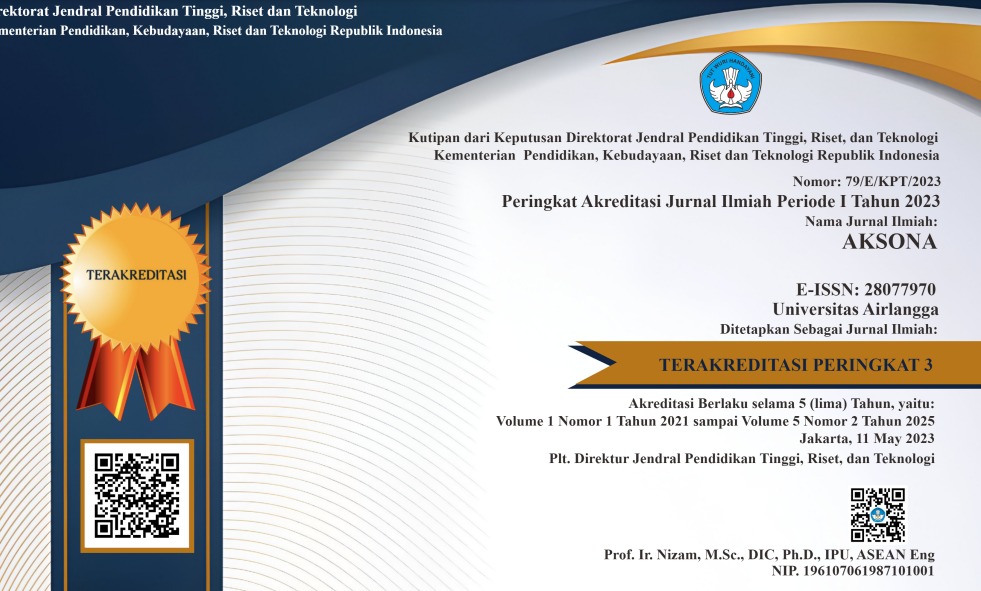Todd’s Paresis as a Postictal Phenomenon in Post-Traumatic Epilepsy: A Case Report
Downloads
Highlight:
- Todd’s paresis presented as transient hemiparesis in a case of untreated post-traumatic epilepsy.
- Proposed pathomechanisms of Todd’s paresis include neuronal exhaustion, active inhibition, and postictal hypoperfusion.
- Todd’s paresis was commonly misdiagnosed as acute ischemic stroke due to the similar clinical presentation
ABSTRACT
Introduction: Todd’s paresis is defined as a paralysis state after an epileptic seizure that lasts for several hours to days and recovers completely afterwards. It usually manifests as a transient hemiparesis after a focal or generalized seizure. Todd’s paresis cases and its mechanisms were still widely discussed. Case: A 48-year-old man with history of post-traumatic epilepsy presented with right-sided hemiparesis and facial weakness after a general motor tonic-clonic seizure. The location of the hemiparesis was contralateral to the post-trauma lesion in left frontal lobe which was suspected to be the focus of the seizure. The postictal weakness resolved completely after 30 hours without any specific intervention. It was revealed that the patient had been having several seizures beforehand after the epidural and subdural hematoma due to head trauma. The patient was diagnosed as Todd’s paresis following a post ictal condition in patient with post-traumatic epilepsy. Conclusion: Todd’s paresis should be considered as a diagnosis in patients with seizure and stroke-like syndrome such as hemiparesis due to its similar manifestations, especially if it resolves within hours. Several mechanisms were suggested to be the pathophysiology of Todd’s paresis including neuronal exhaustion, active inhibition, and postictal hypoperfusion.
Binder DK. A history of Todd and his paralysis. Neurosurgery. 2004; 54(2):480–7. doi: 10.1227/01.neu.0000103490.49537.37
Xu SY, Li ZX, Wu XW, Li L, Li CX. Frequency and pathophysiology of post-seizure Todd’s paralysis. Medical Science Monitor. 2020; 26:1–4. doi: 10.12659/MSM.920751
Todd RB. The Lumleian lectures for 1849: On the pathology and treatment of convulsive diseases. Epilepsia. 2005;46(7):995–1009. doi: 10.1111/j.1528-1167.2005.10205.x
Rolak LA, Rutecki P, Ashizawa T, Harati Y. Clinical features of Todd ’ s post-epileptic paralysis. J Neurol Neurosurg Psychiatry. 1992;63–4. doi: 10.1136/jnnp.55.1.63
Gallmetzer P, Leutmezer F, Serles W, Assem-Hilger E, Spatt J, Baumgartner C. Postictal paresis in focal epilepsies - Incidence, duration, and causes: A video-EEG monitoring study. Neurology. 2004;62(12):2160–4. doi: 10.1212/wnl.62.12.2160
Yang N, Wang BG, Zeng WY, Zhong Y, Cai XS, Zheng LQ, et al. Clinical study of seven patients with special syndrome of post-epileptic dysfunction persisting over 24 hours. Eur Rev Med Pharmacol Sci. 2014; 18(21):3229–33. [Journal]
Mastriana J, Pay JL, De Jesus O, Taylor RS. Todd Paresis. StatPearls; 2022. [Book]
Farrell JS, Colangeli R, Wolff MD, Wall AK, Phillips TJ, George A, et al. Postictal hypoperfusion/hypoxia provides the foundation for a unified theory of seizure-induced brain abnormalities and behavioral dysfunction. Epilepsia. 2017; 58(9):1493–501. doi: 10.1111/epi.13827
Mathews MS, Smith WS, Wintermark M, Dillon WP, Binder DK. Local cortical hypoperfusion imaged with CT perfusion during postictal Todd’s paresis. Neuroradiology. 2008; 50(5):397–401. doi: 10.1007/s00234-008-0362-1
Dague KO, Dafotakis M, Schulz JB, Surges R. Gaze palsy as a manifestation of todd’s phenomenon: Case report and review of the literature. Brain Sci. 2020;10(5). doi: 10.3390/brainsci10050298
Qureshi ZA, Shrestha E, Budhathoki P, Ghazanfar H, Altaf F, Dhallu M. Ophthalmoparesis and bilateral ptosis as a rare manifestation of Todd’s phenomenon: Case report and review. Cureus. 2022; 14(6):e26108. doi: 10.7759/cureus.26108
Degirmenci Y, Kececi H. Prolonged Todd Paralysis: A rare case of postictal motor phenomenon. J Neurol Neurosci. 2016; 7(3):1–4. [Journal]
Yarnell PR. Todd’s paralysis: A cerebrovascular phenomenon? Stroke. 1975; 6(3):301–3. doi: 10.1161/01.STR.6.3.301
Surges R, Strzelczyk A, Scott CA, Walker MC, Sander JW. Postictal generalized electroencephalographic suppression is associated with generalized seizures. Epilepsy and Behavior [. 2011;21(3):271–4. doi: 10.1016/j.yebeh.2011.04.008
Pottkämper JCM, Hofmeijer J, van Waarde JA, van Putten MJAM. The postictal state — What do we know? Epilepsia. 2020; 61(6):1045–61. [Journal]
Yacoub HA, Fenstermacher N, Castaldo J. Postictal Todd’s paralysis Associated with focal cerebral hypoperfusion on magnetic resonance perfusion studies. J Vasc Interv Neurol. 2015; 8(2):32-4. doi: 10.1111/epi.16519
Farrell JS, Gaxiola-Valdez I, Wolff MD, David LS, Dika HI, Geeraert BL, et al. Postictal behavioural impairments are due to a severe prolonged hypoperfusion/hypoxia event that is COX-2 dependent. Elife. 2016; 5. doi: 10.7554/eLife.19352
Khalil A, Choyi J, Hossenbux K, Taha A. Recurrent generalized seizures with postictal Todd’s paralysis caused by medication-associated severe hypomagnesemia: A case report. Case Rep in Acute Med. 2021; 4(3):85–90. doi: 10.1159/000520123
Brosinski CM. Implementing diagnostic reasoning to differentiate Todd’s paralysis from acute ischemic stroke. Adv Emerg Nurs J. 2014; 36(1):78–86. doi: 10.1097/TME.0000000 000000007
Onder H. Todd’s Paralysis: A crucial entity masquerading stroke in the emergency department. J Emerg Med. 2017;52(4):e153-e155. doi: 10.1016/j.jemermed.2016.12.001
Copyright (c) 2025 I Gusti Agung Ayu Andra Yusari, Ni Made Susilawathi, Ni Putu Ayu Putri Mahadewi

This work is licensed under a Creative Commons Attribution-ShareAlike 4.0 International License.





















